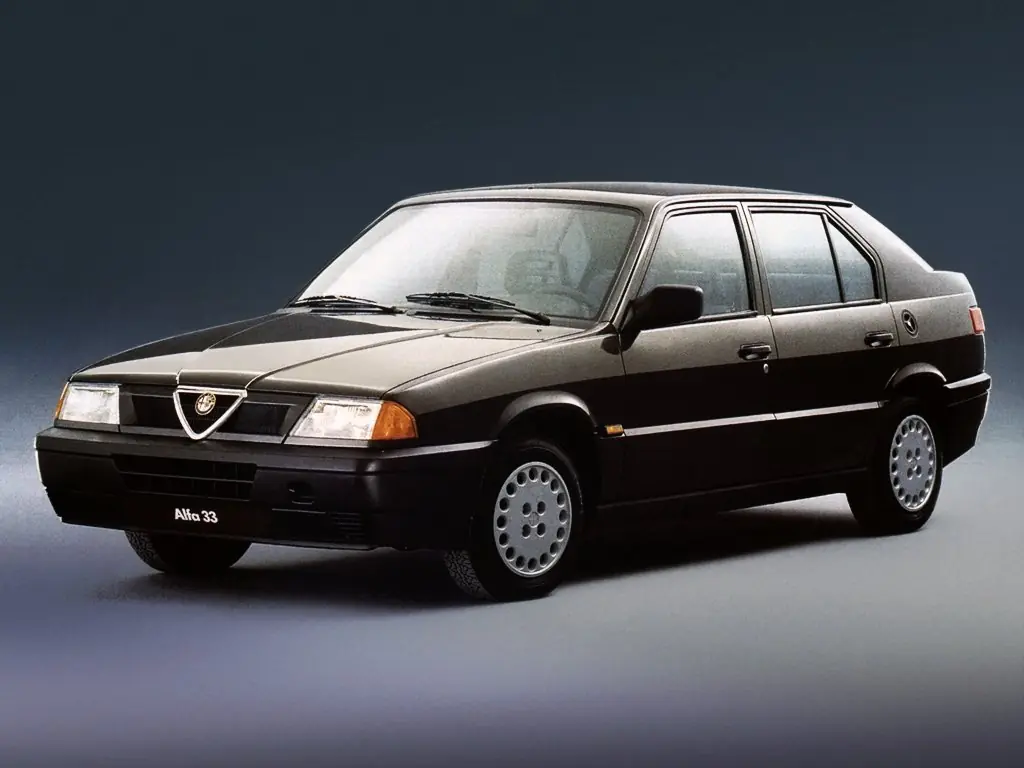Italian cars from the early 1990s rarely balanced practicality and performance as effectively as the Alfa Romeo 33. The second generation (907), produced from 1990 to 1994, marked a significant evolution in Alfa’s approach to the compact family car segment. While maintaining the brand’s sporting heritage, it offered genuine everyday usability that expanded its appeal beyond traditional Alfa enthusiasts.
This five-door liftback emerged during a transformative period for European automakers. As Japanese manufacturers raised the bar for build quality and reliability, Alfa Romeo responded with a thoroughly revised 33 that aimed to combine Italian flair with improved functionality. The result was a car that could satisfy both the heart and the head.
Italian Heart Under the Hood
The 907’s engine lineup showcased Alfa Romeo’s mechanical expertise, with the crown jewel being the 1.7-liter twin-cam powerplant. Producing 129 horsepower through its 16-valve head, this engine delivered the kind of eager response and melodious soundtrack that made Alfa Romeo famous. Even in daily traffic, the motor’s distinctive character turned mundane drives into engaging experiences.
“My 1.7 33 starts every morning with a bark that still makes me smile after three years. It’s not the fastest car I’ve owned, but it’s easily the most characterful.” – Mark Davidson, Alfa Romeo Club Member
Performance figures told only part of the story. While the 0-60 mph time of around 10 seconds and top speed of 176 mph were respectable, the engine’s real charm lay in its delivery. The power band rewarded high revs, encouraging drivers to explore the upper reaches of the tachometer.
Power flowed through a precise five-speed manual gearbox that paired perfectly with the engine’s character. The tall lever might have looked awkward, but it operated with a mechanical satisfaction that modern electronic shifters can’t match.
Daily Driver with Style
Despite its sporting pretensions, the 33 excelled at family duties. The liftback design offered impressive versatility, while the cabin provided comfortable accommodation for five adults. Here’s what made it stand out in daily use:
- split-folding rear seats that expanded cargo capacity significantly;
- supportive front seats with excellent long-distance comfort;
- large greenhouse providing excellent visibility;
- surprisingly tight turning radius for city maneuvers;
- efficient cabin heating and ventilation system.
The interior showcased typical Italian attention to the driver’s environment. The dashboard wrapped around the driver’s position, placing all controls within easy reach. Materials quality exceeded expectations for the era, with soft-touch surfaces and robust switchgear that has aged remarkably well.
Quality plastics and solid assembly meant the cabin remained squeak-free even after years of use. Storage spaces proved adequate for family needs, while the trunk swallowed weekend luggage with ease.
Handling and Road Behavior
The 33’s chassis delivered the handling prowess expected from an Alfa Romeo, with quick steering and agile responses that made every corner an event. Four-wheel drive versions added year-round capability without sacrificing the car’s engaging character.
“Took my 33 through the Alps last summer. The way it handled those mountain passes made me understand why people fall in love with Alfas. It’s not perfect, but it’s perfectly entertaining.” – James Miller, Vintage Car Enthusiast
The suspension struck an impressive balance between comfort and control. While firm enough to minimize body roll, it absorbed road imperfections without transmitting harshness into the cabin. The braking system, featuring discs up front and drums at the rear, provided confident stopping power for the era.
Four-wheel drive variants demonstrated remarkable capability in adverse conditions. The system added weight but delivered the kind of all-weather security that made the 33 a practical choice even in challenging climates.
Design and Legacy
The 907’s design evolved subtly from its predecessor while incorporating distinctive touches that set it apart. Notable styling elements included:
- characteristic Alfa Romeo grille with chrome surround;
- clean, aerodynamic profile with minimal ornamentation;
- integrated bumpers that enhanced the modern appearance;
- distinctive C-pillar treatment that improved visibility;
- wraparound taillights that became a design signature.
This generation’s styling has aged particularly well, avoiding the excessive plastic cladding and busy details that dated many contemporaries. The proportions remain pleasing, while details like the grille and light clusters clearly influenced later Alfa Romeo models.
A Lasting Impression
Time has been kind to the Alfa Romeo 33 (907), transforming what was once a practical family car into a desirable classic. Its combination of everyday usability and characteristic Alfa Romeo traits creates an appealing package for enthusiasts seeking something distinctive.
The car’s increasing rarity, particularly of well-maintained examples, suggests that values may continue to appreciate. While not as celebrated as some Alfa Romeo models, the 33 represents an accessible entry point into classic Italian car ownership.
| Pros | Cons |
|---|---|
| Characterful twin-cam engines with excellent sound | Parts availability can be challenging |
| Engaging handling with precise steering feedback | Rust protection not up to German standards |
| Practical liftback body with generous cargo space | Interior plastics can become brittle with age |
| Available all-wheel drive for all-weather capability | Electrical systems require regular attention |
| Strong community support among Alfa enthusiasts | Limited availability of good examples |
| Distinctive styling that has aged gracefully | Fuel economy falls short of period competitors |
| Excellent value for classic Italian car ownership | Some interior ergonomics feel dated |

